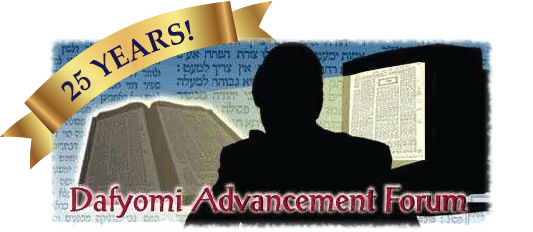Why does the Torah write "ve'Hifshit es ha'Olah", and not simply "ve'Hifshitah" or 'Vehefshit osah'?
Rashi: To incorporate all Olos 1 in the Din of Hefshet (stripping) and Nitu'ach (cutting into pieces).
Why does the Torah write "Vehifshit es ha'Olah" and not 'Vehefshit osah'?
What are the connotations of "Ve'nitach Osah"?
Rashi: To extrapolate "Osah li'Nesachehah", 've'Lo Nesachehah li'Nesachim' (It is a Mitzvah to cut the Olah into limbs, but not the limbs into small pieces). 1
Zevachim, 85a: To extrapolate "Osah li'Nesachehah", ve'Lo Pesulah li'Nesachehah' ? If the Olah became Pasul, it is not cut into pieces but is burnt whole.
Chulin, 11a: From the fact that we do not examine the membane of the brain for a hole, we learn 'Azlinan Basar Ruba' ? that we go after the majority of animals, where the membrane of the brain is not holed.
Why does the Torah separate the Hefshet and the Nitu'ach? Why does it not write "Ve'hifshit Ve'nitach Osah ... "?
Sifra: To teach us that one first strips the entire animal before cutting it into pieces, and not limb by limb.
Who performed the Hefshet and the Nitu'ach?
Ramban and Moshav Zekenim: Since the Torah only mentions the B'nei Aharon in the following Pasuk (in connection with making fire and arranging wood on the Mizbe'ach), it implies that making fire on the Mizbeach and arranging wood on the Mizbe'ach are confined to the Kohanim, but not the Hefshet and the Nitu'ach. Consequently, it is the owner who performed the Hefshet.
Why does the Torah write "ve'Nasnu", "ve'Archu" (plural) by all the Mitzvos Kehunah?
Ramban and Moshav Zekenim: Because many Kohanim gathered in the Beis ha'Mikdash to sacrifice the Olah, in keeping with the principle 'be'Rav Am Hadras Melech' (The King's honor is enhanced when many people participate in the performing of a Mitzvah). 1
Refer to 1:12:151:1-2.
Why does the Torah change the order of the Avodos - preceding the Hefshet and Nitu'ach (in Pasuk 6a) to the arranging the firewood on the Mizbe'ach (in Pasuk 7), and the arranging of the pieces, the head and the fat-pieces (in Pasuk 8) - which is synonymous with their burning on the Mizbe'ach - to the washing of the innards and the legs (in Pasuk 9)?
Ramban and Moshav Zekenim: The Torah is basically describing here how, after the Zerikas ha'Dam, the Kohanim prepared the Olah for burning on the Mizbe'ach in the following order: They stripped off its skin and cut it into pieces after having ignited the wood on the Mizbe'ach 1 and added wood; Then they placed the limbs, including the head and the fat on the Mizbe'ach - after having washed the innards and the legs. 2 And finally, they burned them all together on the Mizbe'ach.
The Pasuk first mentions stripping the skin of the Olah ... before preparing the woodpile, to teach us that preparing the woodpile on the Mizbe'ach was only obligatory for the Olas Tamid, but not for an Olas Nedavah - as the Torah indicates in Bamidbar 6:5 (Ramban).
See Rav Chavel's footnotes.
Seeing as "ve'Archu" (in Pasuk 8) implies burning, why does the Torah repeat "ve'Hiktir" (in Pasuk 9) with regard to the limbs?
Ramban: To teach not to remove the limbs from the Mizbe'ach until they are completely burned and until they have taken off some of the burning embers to burn the Ketores on the Mizbe'ach ha'Zahav.
Why did the Torah need to say that the Korban is skinned?
Moshav Zekenim and Da'as Zekenim: Since the Parim ha'Nisrafim are burned with their skin, it needs o mention here that even though the Olah is totally burned, its skin is not muszt be removed.




